My Choice: Best Ornamental Grass
I’m going to stick my neck out on this one. First, I’m going to pick my own personal choice as the one ornamental grass I’d have if I could have only one. That will force me to choose from some of the most popular plants in Texas horticulture currently. I’m going to be leaving many behind as I make that decision.
Second, on a related note, I’m going to state my own personal opinion – one you may have heard me say or seen me write over the past 8 or 10 years. It’s one that’s not popular with a lot of landscapers and home gardeners: I think we have gone way too far in using ornamental grasses in our landscapes. We’ve used them where we might otherwise have used shrubs, and in doing so we’ve missed a couple of really important points. For one thing, almost all are deciduous. They die to the ground in the winter, so you’re going to have four or five months when they’ll be essentially non-functional. Shrubs wouldn’t do that to you. And, many of them thin and die out after a couple of years.
Here are my also-rans and why:
• Purple fountaingrass. Beautiful, but it’s an annual in all but deep South Texas. Most grasses are perennials.
• Maidengrass and its cultivars. These are gorgeous, but most of them seed freely. I got tired of pulling up seedlings. Plus you have to decide whether you’re going to cut off the brown blades or leave them there all winter. (Not attractive to my eye.)
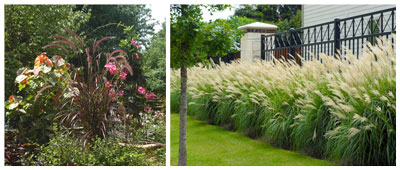
Purple fountaingrass and Maidengrass
• Zebragrass. Lovely tall grass, but it’s weak-stemmed, usually falling over before fall.
• Pampasgrass. I grew up with this one. It gets way too large for modern urban lots, plus it’s not completely winter-hardy in North Texas. It’s wicked to work with, but it is a handsome plant if you have 10 or 12 feet to spare.
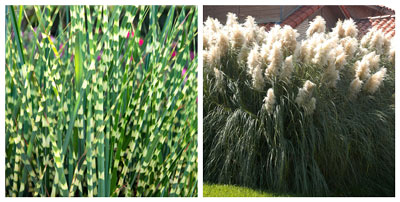
Zebragrass and Pampasgrass
• Moudry and Hameln pennisetum. Both are pretty when they’re blooming, but mine have always thinned out after a couple of years. Personal feeling: it looks like a fire hazard if you don’t trim it back in early winter.
• Gulf muhly. Beautiful when it blooms with pink plumes in late summer and fall, but as with others, mine have always tended to thin out after a couple of years.
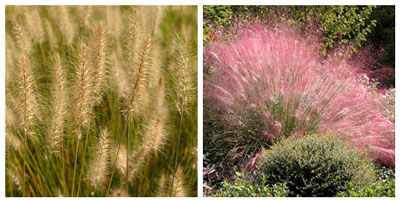
Moudry and Hameln pennisetum and Gulf muhly
• Inland sea oats. If you’ve ever had one, you now have thousands. This thing is really invasive. Pretty plant, but once was enough.
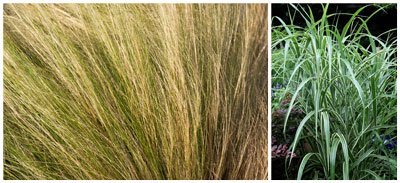
Mexican feathergrass and Cabaret maiden grass
And so, my personal choice as the best of all the ornamental grasses is…
Lindheimer’s muhly
This is a strongly clumping evergreen perennial that’s native to Southwest Texas from the Hill Country south into Mexico. (See more on it in this page from the Lady Bird Johnson Wildflower Research Center in Austin: http://www.wildflower.org/plants/result.php?id_plant=MULI) The clumps grow to be 30 to 36 inches tall and wide, and the plumes rise 2 feet tall. Its blades are blue-green, and they’re strong enough to remain in fountain-like form month after month.
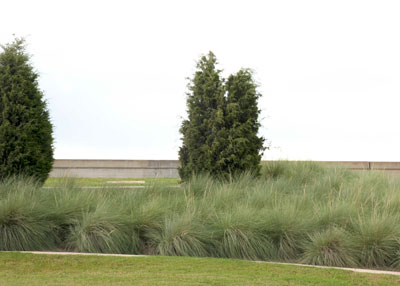
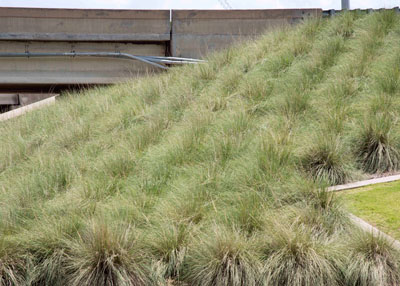
A very good friend of mine, Dr. William C. Welch of College Station, introduced this plant to me almost 40 years ago. He grew it in a large decorative clay pot on his beautiful patio. That was long before the age of ornamental grasses. This one has been a steady performer in the Sperry landscape for almost all of the ensuing years.

